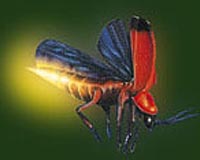| . |  |
. |
Canberra, Australia (SPX) May 11, 2009 Australian rabbits have had everything but the kitchen sink thrown at them over the years. Myxomatosis knocked them about but they bounced back. The same with rabbit haemorrhagic disease (RHD) or the calicivirus. Now Dr Tanja Strive from CSIRO Entomology and the Invasive Animals Cooperative Research Centre has found that some rabbits in cool, high rainfall areas carry a benign virus that gives them immunity to RHD. "We knew that RHD was not as effective in these areas and we suspected from anti-body responses that there was a non-lethal calicivirus out there. Now we have found it," she said. "This new virus does not cause disease in rabbits and we fear that it functions as a natural vaccine, protecting rabbits from the lethal calicivirus." Dr Strive said it was "needle-in-the-haystack" search as they had to find out: which areas in Australia were affected, where in the rabbit the virus lurked, at what age rabbits became infected and in which season the virus was active. "We discovered a new, endemic virus that we have called Rabbit Calicivirus Australia1," she said. "Its ancestors probably came to Australia with the first rabbits 150 years ago. We found it in the intestinal tissues and we believe it has a faecal-oral mode of transmission." The CEO of the Invasive Animals CRC, Professor Tony Peacock, said rabbits are flexing their muscles again and are estimated to cost Australia's agricultural industries around A$200 million each year as well as causing severe environmental damage. Just two rabbits per hectare can be enough to stop plant regeneration. "The discovery of this new virus has important implications for ongoing and future rabbit control," Professor Peacock said. In the short-term at least, rabbit control strategies in affected areas needed to focus on integrated control, using methods such as the Myxoma virus and warren destruction. "We will need to use any existing window of opportunity to apply the lethal calicivirus more effectively and better target eradication attempts on affected populations," Professor Peacock said. "There is also a need for more research to understand where this virus is and how it acts, so we can develop new strategies to overcome this problem and maintain benefits of biocontrol in the future. "The discovery of the virus means we must continue developing and improving rabbit control options to reduce their impact and improve ecosystem management." Share This Article With Planet Earth
Related Links CSIRO Entomology Darwin Today At TerraDaily.com
 Fears of 'lights out' for fireflies in Malaysia
Fears of 'lights out' for fireflies in MalaysiaKuala Lumpur (AFP) May 7, 2009 A dazzling firefly population that is one of Malaysia's top tourist attractions faces destruction within months because of large-scale land clearing, a lawmaker warned Thursday. "If we do not do anything, the lights will go out for the fireflies by the end of the year," said Elizabeth Wong, who heads tourism and environmental affairs in the state of Selangor, which surrounds Malaysia's capit ... read more |
|
| The content herein, unless otherwise known to be public domain, are Copyright 1995-2009 - SpaceDaily. AFP and UPI Wire Stories are copyright Agence France-Presse and United Press International. ESA Portal Reports are copyright European Space Agency. All NASA sourced material is public domain. Additional copyrights may apply in whole or part to other bona fide parties. Advertising does not imply endorsement,agreement or approval of any opinions, statements or information provided by SpaceDaily on any Web page published or hosted by SpaceDaily. Privacy Statement |